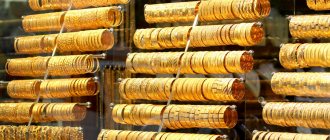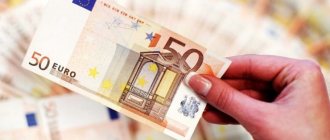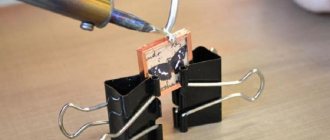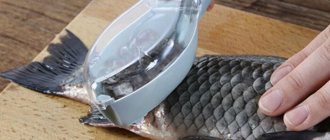Every year there is more and more counterfeit money in Russia. And if many people know how to recognize a fake among their own rubles, then dollars often remain a mystery. Because part of the population has not even seen the originals. And when faced with American currency, we may accidentally fail to recognize the wrong bill.
The editors of Banks Today decided to find out what fakes are and what to do if they were found in your wallet. But not just find out, but ask an experienced person. And today our interlocutor is Viktor Denisov , a security officer at one of the large banks, who has encountered counterfeit dollars more than once and knows how to distinguish them.
About counterfeit dollars: modern facts
A huge number of counterfeits are involved in the global circulation of dollars. For example, in 2011, approximately $220 million of dollars did not pass the authenticity test.
The largest number of counterfeit dollars is created in Peru, and until 2013, Colombia was the leader in this segment. Even if the images on such banknotes are correct, non-original paper is easily recognized using an infrared lamp.
In North Korea, quite high-quality counterfeits are created, which they began to call “super dollars.” According to experts, such banknotes are printed on American printing presses taken from the territory of the GDR during the unification of Germany. Money dye is purchased from a company in Switzerland, which supplies the mixture to the US Treasury. It is estimated that the DPRK receives about $25 million in income annually from counterfeit dollars.
Note! Each person is responsible for the security of their finances, so the consideration of the cash received must be approached very carefully. Ideally, use special detectors. If there are none, it is enough just to carefully examine the bills.
Tactile sensations
In many cases, you can distinguish a fake from a genuine banknote by touch. To do this, it is useful to know what signs you should pay attention to first.
Structure
In terms of physical properties, the material from which dollars are made is more reminiscent of fabric rather than cellulose paper.
Dollar bills have high mechanical strength. They withstand exposure to water without consequences and are easily restored after being crushed. Bank notes are elastic and can stretch a little. Upon tactile examination, the material feels a little rough.
Thickness
The thickness of the banknote is less than that of the counterfeits. When making real dollars in 2022 and earlier, the paper is pressed so it is strong and thin. Counterfeiters use low quality paper. If there is a similar banknote of the same denomination and the same series and you are confident in its authenticity, you can compare them. They should be the same.
Visually, dollar bills look quite thick. However, this effect is achieved through the use of relief printing. The thickness of bank notes is actually quite small. Even the highest quality counterfeits are printed on thicker paper.
Where can you get fake dollars?
Counterfeit dollars can be found in a variety of places under any circumstances. Fraudsters most often use psychological factors to transfer such banknotes. In a stressful, hurried situation or at night, few people look at the money received from a person.
Counterfeiters try to target those people who do not know what a real dollar looks like. Fraudsters often operate near train stations or airports. In some cases, a counterfeit can even be given out at a bank.
Attention! When receiving a large sum of money in foreign currency, it is very important to consider each bill individually. Often among real banknotes there may be one or two counterfeit ones.
Portrait of a woman
A woman's portrait was printed on the 1886, 1891, and 1896 one-dollar bills. It was a portrait of Martha Washington, wife of the First President of the United States.
The Ministry of Finance planned to update the $10 in 2010. It was 100 years since the amendment to the US Constitution was passed, giving women the right to vote. In connection with this event, it was planned to print an unknown female face. The person who would decorate the banknote had to be chosen by public vote. The competition was held by independent organizations. According to the results, first place went to Harriet Tubman . Eleanor Roosevelt and Rosa Parks took second and third respectively. As a result, the Ministry did not issue banknotes with the update. Therefore, Hamilton's portrait will remain on it as before.
How to counterfeit 100 dollars
There are many ways to counterfeit a $100 bill. It all depends on the abilities and tools of the particular counterfeiter. One of the most common is the method of altering banknotes of a lower denomination. The ink is washed off from a $1 or $5 bill and then the $100 currency stamp is applied. The money feels real to the touch, but the portrait will be different.
They can also simply add two zeros to a $1 bill. There also remains a portrait of a one-dollar bill, and besides, exposure to ultraviolet light will immediately make it possible to determine whether it is counterfeit.
Paper
- thinner than usual. The counterfeit paper is ordinary paper made from cellulose, so it is much thicker than a real bill.
- rustles because paper is the same fabric, it consists of cotton (75%) and linen (25%);
- not afraid of water. If you wet it, then after drying it will not lose its properties, but ordinary paper becomes unusable after such a procedure.
On the holographic stripe the number 100 moves
$100 Authentication
There are currently two types of $100 banknotes in circulation: old and new. A complete update began back in 2003 with a $20 banknote, and in 2013 a new “hundred” note entered the market. For all series, some general criteria are valid for how to distinguish $100 from counterfeit ones:
- there should be a portrait of Benjamin Franklin on the front;
- all dollars are printed on a special canvas, clearly different from ordinary paper;
- the surface of the banknote is slightly rough;
- counterfeit bills are usually much thinner than the original ones.
The features of the old and new banknotes should be considered separately.
How to check the authenticity of an old-style 100 dollar bill
It is old-style banknotes that are most often counterfeited. In order not to run into scammers, it is advisable to pay attention to the following elements:
- Banknote frame. In the original it should be clear and continuous.
- Portrait. A real portrait is characterized by realism and increased attention to detail. On one side there is always the inscription “The United States of America”, which can only be seen with a magnifying glass.
- Serial numbers. If you have time, you can compare the serial numbers of the bills. Uniqueness is the main condition for authenticity.
- Protective strip. It can be seen when holding the banknote up to the light. The stripe contains the inscription USA and the denomination 100.
- Water marks. The corresponding protective elements must be clearly visible from both sides. Small bills issued before 1996 do not have a watermark.
- Reverse side. The back of the bill features the façade of Independence Hall.
100 dollars new sample
Recent developments in the field of banknote security have allowed the Treasury to issue a new $100 note, which almost all counterfeiters are trying to avoid. It's all about new levels of protection that are practically impossible to imitate. In most cases, scammers rely on the fact that not everyone is intimately familiar with the new banknotes.
The updated $100 banknotes are characterized by the following identification marks:
- watermark in the form of a portrait of Benjamin Franklin;
- three-dimensional tape;
- light blue tint of paper;
- symbol of freedom, excerpts from the Declaration of Independence and a feather;
- printing with a relief structure;
- iridescent number;
- an image of an inkwell, next to which there is a bell that disappears when tilted;
- on the right side there is the signature of the US Secretary of the Treasury;
- pressed thread with USA 100 inscription;
- the main portrait of the president has moved slightly to the left compared to the old model, and is also enlarged and surrounded by a frame;
- there is a unique code of 11 characters, repeated twice on the front side of the bill;
- on the reverse side there is the number 100 in gold color;
- drawing of the rear façade of Independence Hall.
Even if scammers try to imitate a new bill, there will always be differences in the details. It is almost impossible to foresee all the nuances.
Protective signs
Genuine dollar banknotes have a number of degrees of protection:
- Magnetic – part of the image is made using paint that has ferromagnetic properties. To check this characteristic, a special sensor is required, which is equipped with banknote detectors.
- Iris roll. It represents a gradient transition from one color to another. A home printer is not capable of simulating this effect.
- Banknote size. The dollars in circulation are 155.956 mm long and 66.294 mm wide. Deviation of no more than 2 mm in both directions is allowed.
- 3D ribbon used on $100 bills. On it you can see numbers and images of bells that move when the angle of inclination changes.
- Metallic paint. Used for printing NextGen series banknotes. On the obverse of $10, $20, and $50 tickets, to the right of the president's portrait are images of the Statue of Liberty's torch, an eagle with a shield, and a star, respectively.
- Background glow in ultraviolet. Genuine banknotes do not have this phenomenon. The paper used by scammers will glow when exposed to UV rays. At the same time, in authentic banknotes, security fibers that are embedded in the structure of the paper and a hidden thread that runs across the entire width of the banknote luminesce.
Home methods for verifying the authenticity of money
Methods for protecting banknotes are being improved from year to year, making it more difficult for counterfeiters. The most effective way to determine the authenticity of money is to use special equipment. However, the average user does not have access to such devices, so one must rely on the senses.
Fortunately, many criteria have been developed for identifying a fake based on tactile sensations, color, and other parameters. To guarantee your peace of mind, it is advisable to know in advance what a real 1 dollar looks like.
To the touch
Original dollars are printed on high quality cotton and linen paper. In terms of characteristics and properties, it differs from paper made from wood, and is also rougher and denser to the touch. If you examine the surface with a magnifying glass, you can see the interweaving of fibers.
The material of the banknotes is quite elastic, but the bills still have a noticeable crunch when crushed. If necessary, even a very crumpled banknote can be smoothed out to its original state.
The specific sensations from touching dollars are due to the use of a special printing technology called “intaglio”. In this case, the paper is pressed into an engraved plate, thereby acquiring a special texture.
Unlike a fake, the original dollar has a noticeable relief. Simply run your fingernail across the clothes of the depicted president. Even the most advanced counterfeiters cannot imitate this effect.
By color
Dollars are created using paper without optical brightener, which gives it a characteristic yellowish-green tint. If you illuminate the original with ultraviolet light, you will notice significant darkening in the free areas.
By the presence of colored fibers
In authentic banknotes, upon closer examination, you can see small red and blue fibers. Moreover, they are not printed along with other images, but pressed into paper. Counterfeiters in most cases cannot afford such an operation and limit themselves to one of the following application methods:
- scanning and printing along with the main image;
- drawing with special felt-tip pens (the fibers are thick and are located directly on the surface of the paper);
- Fibers from banknotes of lower denominations are glued (such elements are easily separated from the banknote with a needle).
For a better view of colored fibers, it is advisable to use a magnifying glass with four times magnification.
By paint quality
Images are printed on banknotes using special ink, the composition of which is kept strictly secret. On the front side they use black paint that has magnetic properties. The reverse side of the banknote is printed with non-magnetized green ink.
Additional Information. The high quality of the compositions used ensures the durability of banknotes and the preservation of image clarity regardless of the operating mode. The easiest way to check the paint is by rubbing the bills against each other. If the images are blurred, then the banknotes are definitely not real.
By serial numbers
The serial number is a special combination of letters and numbers that appears on every US dollar bill. $1 and $2 bills have a code of two letters and eight numbers, while larger bills have a code of three letters and eight numbers.
The first letter indicates the series number, and the eight-digit code determines the serial number of a particular banknote. The last letter determines the number of bills with such numbers within one series. In some cases, instead of the last letter, you can see an asterisk, indicating that the bill is replacing a defective one. Also, every 100,000,000 banknote is marked with an asterisk.
The number must be printed in one line with equal spacing between characters. The color of the font must match the color of the Treasury seal.
Serial numbers cannot be repeated, which is strictly regulated by law. Using this code, you can determine the place and date of manufacture of a specific banknote.
By control letter
The $1 and $2 bills have a control letter, which is located on the left side of the president's portrait. A place is allocated for it inside the seal. The serial alphabetical number of this letter is duplicated three more times in the corners of the light part of the bill. On high denomination banknotes the control letter is not used.
By border
Real dollar bills always have a straight, crisp border. A distinctive feature of this frame is the saw-shaped endings and pointed ends.
According to the portrait
One of the most common methods of handicraft counterfeiting dollars is the so-called zeroing. In this case, zeros are simply added to the original bill of a lower denomination. Detecting such a counterfeit will usually not cause any problems, since in this case it is enough to simply remember the appearance and names of the presidents depicted on the banknotes.
If counterfeiters resort to forging a portrait, they most often do it in an extremely unprofessional manner. Because of this, minor flaws appear in the final portrait, which an attentive person can easily notice. Changes may concern the eyes, facial features, clothing or hairstyle.
We should also pay attention to the quality of the portrait. There should be no stains or unevenness. On fakes you can often find a darker background created by artisanal means.
Additional signs
Additionally, it makes sense to consider the US Treasury seal located on each bill. In the original it has a rich shade and smooth lines.
Important! You can also pay attention to microprinting directly on the portrait. The denomination of the banknote must be indicated on it.
Serial number
The numbering on both sides of the bill must be the same, all numbers must match.
The series must be at the same level on both sides of the banknote.
Numbering check: the second letter in the first row must also appear in the second row (F)
The letter and number below the numbering must correspond to the order in the English alphabet (A - 1, B -2, C- 3, and so on). The letter is the branch of the Federal Reserve Bank that prints bills.
What to do if you find counterfeit $100 bills
If you discover a counterfeit banknote, you must immediately contact law enforcement agencies. Keeping such banknotes or using them to pay for goods is strictly prohibited, since such an act is criminally punishable. A person may well be accused of possessing and distributing counterfeit money or even counterfeiting.
It is advisable to remember the person from whom the money was received. The more detailed the circumstances of receiving counterfeit money are described, the higher the likelihood of finding the attacker.
It is advisable not to touch the banknote, but immediately transfer it to a bag. This will leave the possibility of identifying counterfeiters by fingerprints.
Conclusion
In conclusion, I would like to say that, as with any banknote, the same rule always works to check its authenticity. The three P rule: look, feel, twist. I would like to wish you not to fall for the cunning minds of counterfeiters and be extremely careful with currency transactions, because everything depends only on you! And the Federal Reserve System of the United States of America, in turn, took great care to ensure that banknotes were impossible to counterfeit. Also, people with disabilities and those deprived of vision were not left without attention; for them, the currency is equipped with tactile elements.











